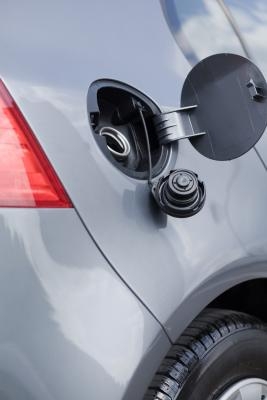
Dual fuel tank installations are done to add spare gas tanks to long haul vehicles, air planes or motorcycles. Dual fuel tank installations add biodiesel tanks to convert a gas-powered vehicle to a flex-fuel vehicle. Dual fuel tanks can be temporary and droppable or permanent.
Diesel trucks can have dual fuel tanks in addition to the primary fuel tank. They are mounted on either side of the chassis. Installing dual tanks on opposite sides balances the load and prevents the truck from pulling to one side. Dual fuel tanks are frequently connected to each other by a crossover hose.
Flex-fuel vehicles can be purchased with dual fuel tanks, one for gasoline and the other for a second fuel such as ethanol or biodiesel. Vehicles can be converted to flex fuels if their engines can handle alternative fuels and a second fuel tank is added. The engine must be modified with a switch to specify the type of fuel used. Car owners can install fuel gauges for each type of fuel. However, the "dual fuel" vehicle label does not always mean the vehicle has dual fuel tanks, only that it can handle both types of fuel.

Additional fuel tank installations are added under the wings of aircraft. Two fuel tanks of equal size and weight are added, one under each wing, to balance the load. Hydraulic lines from the external fuel tanks are connected to the main fuel tank. The fuel is pulled in via a pneumatic pressure line. A fuel tank selector allows the pilot to decide which fuel tank to use during flight.